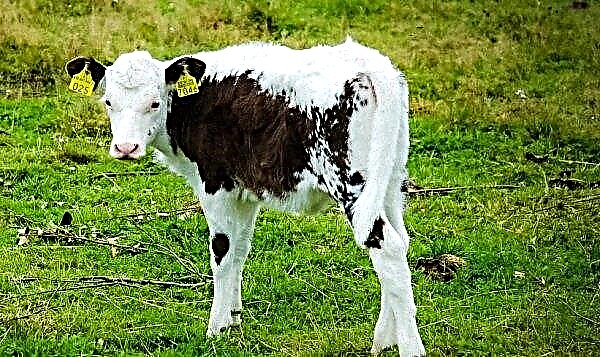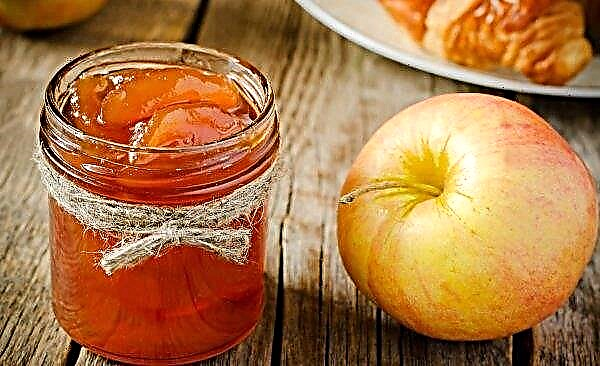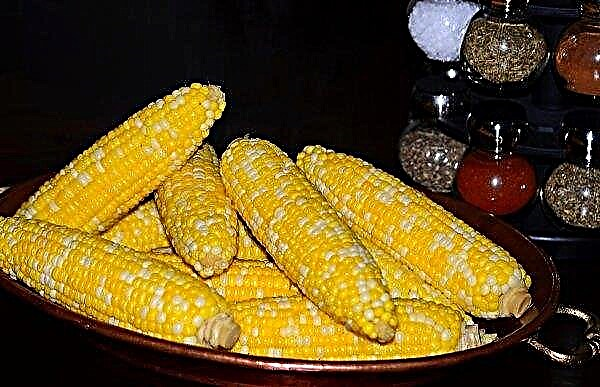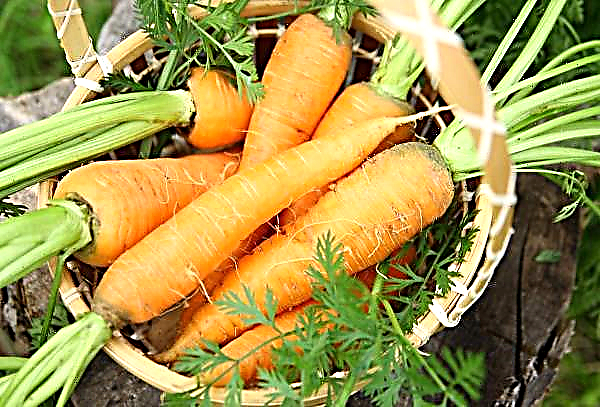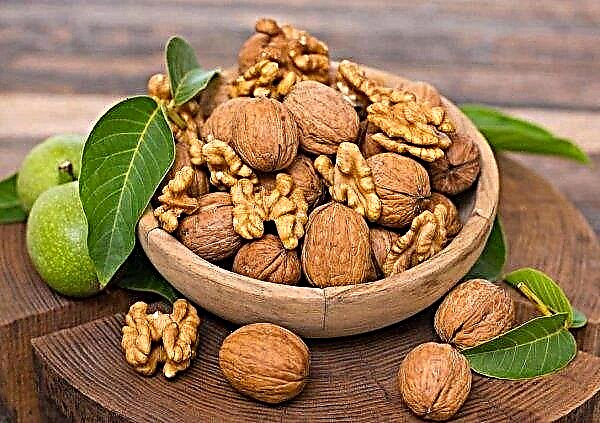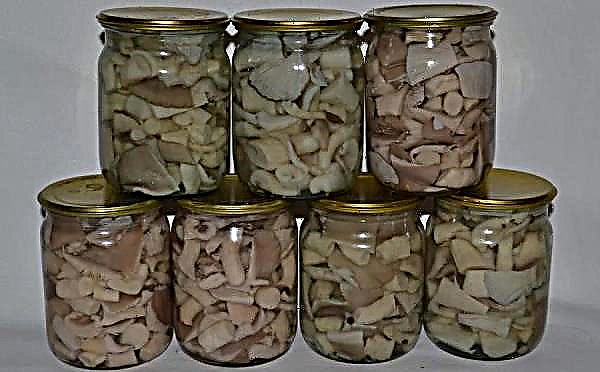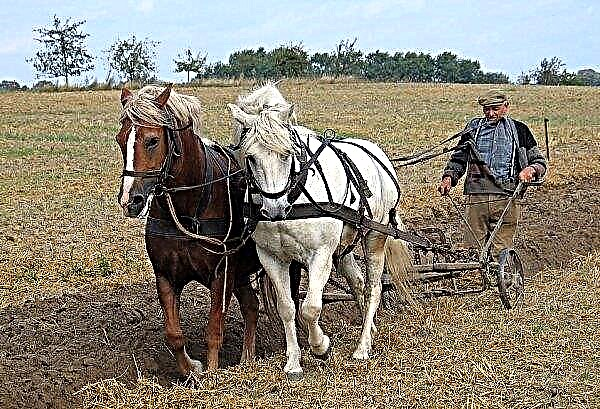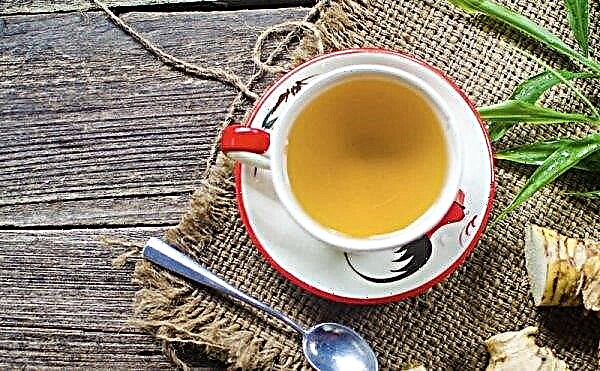A phenomenon characteristic of many representatives of the animal world, when a male overshadows an inconspicuous female with her bright appearance, is true not for all species. So, the situation with gender differences in birds, including domesticated and used in agriculture, looks very ambiguous: if you distinguish a rooster from chicken, a turkey from a turkey and an ostrich from an ostrich, it’s no problem, then with ducks or geese in this regard, As a rule, special knowledge is indispensable. This review provides various methods for determining the sex of ducks, which should be noted by a novice poultry breeder.
Why determine gender
A clear distinction of animals by sex is a question that invariably arises before the farmer at different stages of poultry rearing. So, for example, this is necessary when:
- acquisition of breeding material for breeding (The main thing in growing ducks is eggs, regardless of whether they are the final product or sent for incubation, therefore, the farmer definitely does not need a random purchase of the excess number of males. In addition, experts advise higher productivity and obtaining offspring with strong immunity to acquire males and females from different sellers, and, not being able to distinguish birds by gender, the breeder is not immune from deception);
- making the right proportions of the parent herd (in this regard, each bird species has its own optimal standards, the violation of which negatively affects productivity);
- rearing young (timely separation of boys from girls and their subsequent separate maintenance is mandatory to prevent too early maturation and uncontrolled closely related relationships, especially undesirable when breeding birds of valuable breeds);
- breeding ducks for meat (since males gain more weight than females, acquiring ducklings for future slaughter, it is more profitable to give preference to boys.

Methods for determining sex
In ducks, as in any animals, there are primary and secondary sexual characteristics by which females and males can be distinguished. However, the problem is that the genitals of birds are hidden under thick plumage, the structural features of these organs in males and females differ not so noticeably as in humans and animals, and not everyone can catch a duck to look under its tail. . Therefore, in order to recognize the gender of the bird, a whole complex of “tips” is used - from the external signs to the peculiarities of behavior.
Did you know? The parent herd of ducks is formed on average according to the principle of one drake per duck (fluctuations in one direction or another are possible depending on the breed and direction of growing the bird - meat or egg). It is interesting that the similar proportion of chickens is at least twice as high in favor of ducks, but geese belong to monogamous birds, they are prone to create stable pairs and are very difficult to lose a partner, therefore, even on an industrial scale, one gander should be no more than three to four geese.
In appearance
If you carefully consider two ducks of the same breed and age, for which it is known for certain that one is a boy and the other a girl, you can see not one, but several differences between them. Subsequently, one can use this knowledge to identify individuals of an unknown sex. In particular, you need to pay attention to:
- The size of the bird. All other things being equal, the duck is smaller than the drake and looks more feminine, while the male, as it should be for the representative of the “stronger sex”, seems larger and more powerful, “wider”.
- The structure of feathers on the tail. In ducks in this area, the feathers are located on the same level, lining up in a straight line, in the drakes the plumage grows in an arc, as a result the tail appears to be rounded.
- The shape of the head. In females, the head is round, for drakes the smoothness and correctness of the lines is not characteristic. In the drake, the forehead is wider, sharply diverging from the base of the beak, forming the shape of a triangle. The duck has a not so sharp transition from the beak to the forehead, this part of the body looks more like a trapezoid.
- The size of the beak. The female has less, the male has more.
- The neck. In the duck it is noticeably shorter, in addition, the females on the neck do not have a characteristic crest with elongated feathers of a brighter color, as well as the beard found in the drake.
- Paws Strong and muscular legs are more characteristic for the drake than for the duck.
 In addition to these differences, the drakes usually have a brighter and darker plumage, but if in some duck breeds (for example, in ordinary wild ducks) this symptom is so obvious that no additional “research” is necessary, then most species of poultry differences in plumage are very arbitrary.
In addition to these differences, the drakes usually have a brighter and darker plumage, but if in some duck breeds (for example, in ordinary wild ducks) this symptom is so obvious that no additional “research” is necessary, then most species of poultry differences in plumage are very arbitrary.By voice
If you managed to hear this voice from a bird at all - most likely, in front of you is a female. The sounds themselves made by birds of different sexes are also fundamentally different. Everyone knows the quacking - the voice of a duck, drakes rather hiss if they are disturbed. However, in the flock of birds you can hear other options for voice accompaniment: whistling, overflows, call bells, reminiscent of the sound of a trumpet, yelling.
However, in the flock of birds you can hear other options for voice accompaniment: whistling, overflows, call bells, reminiscent of the sound of a trumpet, yelling.
In all this polyphony, if the flock is already alarmed, the sounds made by males will stand out: the drakes rarely “speak out”, but more loudly than the females.
Important! The drakes are silent. They are not inclined to use the voice for communication, for the female, the constant issuing of loud and well-recognized sounds is part of the maternal instinct - this is how young ducklings can not get lost during a walk or “swimming lessons”.
The nature
Experienced farmers argue that the sex differences in ducks are so noticeable in the behavior of birds that, just by observing a feathered herd, it is possible to accurately distinguish a female from a male in eight out of ten cases.
The error of twenty percent is due only to the fact that due to the incorrect formation of the parent herd, the sexual characteristics of the behavior of birds begin to change unnaturally: lacking “protectors”, females are forced to take on some of their functions. At the same time, the males have no choice but to accept the current state of affairs and take in the pack a passive position, originally inherent in the "girls". As a result, gender differences in the nature of the birds are gradually leveled.
At the same time, the males have no choice but to accept the current state of affairs and take in the pack a passive position, originally inherent in the "girls". As a result, gender differences in the nature of the birds are gradually leveled.
If you do not take into account the anomaly described above, the behavioral characteristics of ducks of different sexes are as follows:
- The obvious leader of the pack is always a male. His authority is almost unquestioned. Observing the leader, you can establish the gender of the remaining individuals in the feathery herd: in relation to the ladies, the leader always behaves gallantly, any manifestations of aggression, struggle for territory, food, etc. on his part are possible only in contact with representatives of his gender.
- In a situation where one duck shows something similar to gallantry, politeness towards another (skips forward, gives way to a better place), the first is most likely a male, the second is a female. However, this rule is not absolute: while ducks hatch eggs, drakes usually conclude a truce and can behave more loyally with each other.
- Unlike people, in ducks during mating, the male is most concerned about his appearance. He tries to fluff feathers, sit down and generally prefers not to leave his chosen one for a minute, so that a more successful rival does not take his place.
- Ducks are more pronounced homebodies than drakes. They fly noticeably less and generally behave much calmer.
Did you know? Erasing the differences between the sexes is an objective process that characterizes the state of the modern world. The Spanish fashion designer Miguel Gil, while studying the tastes of his clients, found that only 18% of women who turn to him (age group 25–55 years old) prefer to wear skirts rather than trousers. In Australia, police officers of any gender are allowed to wear long hair while women can let go of their beards. In the traditional mustache competition, held in the UK, since 2005, representatives of both sexes have been participating.
By cesspool
The main and only reliable difference between the male and the female in the vast majority of animals is the presence of a penis - the penis. Ducks are no exception to this rule.
Thus, in order to accurately establish the floor of the duck, you need to take the bird in your hands and look under its tail. This can be done in several ways, it is only important not to scare and injure the bird, while at the same time showing sufficient firmness and self-confidence. As a rule, the caught duck is placed on the lap of the person holding it, the bird's head is closer to itself. Next, you need to carefully fix the duck so that you can free your hands, or involve an assistant in the procedure.
As a rule, the caught duck is placed on the lap of the person holding it, the bird's head is closer to itself. Next, you need to carefully fix the duck so that you can free your hands, or involve an assistant in the procedure.
The main task is to spread the feathers and open the cesspool with two fingers. In the drake, a small penis can be seen in the opening, and in the duck, the surface is covered with uniform folds without any bulges. It should also be borne in mind that the older the duck, the more clearly the penis is visible, therefore, with ducklings, a similar method to use is inefficient.
Important! The penis is the primary sexual characteristic. All the differences listed above are secondary.
Ultrasound
A rather unusual method for determining the sex of a duck involves the use of ultrasound. The device tunes to a specific frequency (for this it is necessary to spend enough time conducting various experiments) until the waves it emits begin to distinctly attract some members of the feathered herd. In the end, a whole flock of birds gathers around the device, all of them are of the same sex.
Japanese method
With the Land of the Rising Sun, for a not entirely clear reason, a method is connected that allows you to determine the sex of a very small duckling by the structure of its genitals. As was said, the penis cannot be detected at this age, but the buds of this organ are already present in the chick.
Important! The ultrasonic method has one significant drawback: it allows you to divide the herd into two halves - male and female, but does not suggest "who is who." For the separate keeping of young animals, such a half measure may be enough, but in other cases there is not so much benefit from it.
To find them, you need to lay the duckling on the back and massage the baby’s tummy with gentle movements for a few seconds. After the bird reaches the necessary degree of excitation, as described above, but with double caution, open the cloaca and look for a tiny process in it, twisted by a spiral.
This is the so-called pseudopenis. It may be necessary to use a magnifying glass in the work, since the desired organ does not exceed two millimeters in length. Only boys have such a “decoration”; in females, the cesspool is smooth. For general information, we note that there are also other modern methods for determining the sex of farm birds - acoustic (by voice, but using a highly sensitive technique), colorsexing (by specially programmed genetic differences in the plumage of individuals of different sexes), etc.
For general information, we note that there are also other modern methods for determining the sex of farm birds - acoustic (by voice, but using a highly sensitive technique), colorsexing (by specially programmed genetic differences in the plumage of individuals of different sexes), etc.
Did you know? The Japanese would most likely be very surprised to find out the name of the method described above. In fact, the inhabitants of the Land of the Rising Sun since the last century have been using an absolutely mechanized system for recognizing the sex of chicks with the help of a special probe that is inserted into the cesspool. Within an hour, this equipment allows the identification of up to five hundred birds with very high accuracy.
How to distinguish a duck from a white drake
They say that in the darkness all cats are gray. To paraphrase this saying, we must admit that the owners of white ducks have the greatest difficulties in determining sex, since with such a plumage the concepts of “bright drake - the darker color of the feather” and “nondescript duck - light feathers” lose their relevance. Meanwhile, among the duck breeds that are often found on farmsteads, very many have white plumage. It is enough, for example, to recall:
Meanwhile, among the duck breeds that are often found on farmsteads, very many have white plumage. It is enough, for example, to recall:
- Beijing
- Agidel;
- Cherry Valley;
- Star 53;
- Blagovarskaya;
- Pace;
- Moscow White;
- White Bashkir;
- White Indian runner, etc.
Some features of differences in different breeds
The above distinguishing features of ducks and drakes are relevant for all breeds. But at the same time, each of the existing varieties of this poultry has those sexual characteristics that need to be paid attention in the first place, since they are the most striking markers for identification. Consider these features on the example of several of the most popular duck breeds among our farmers.
Bashkir ducks
The Bashkir duck has one very remarkable feature. The male has several feathers on its tail, distinctly bent upwards in the form of a peculiar flirty crest (remotely the “keel” of the drake of this breed resembles a dog’s tail twisted by a bagel). Ducks lack such decoration. For all this evidence, for all its evidence, it is worthwhile to look closely only with respect to Bashkir ducks of white color. The gray and blue Bashkir women are very close in color to their wild relatives, in which, as you know, the duck and drake look completely different: the male’s neck is decorated with a distinct necklace, the head, as well as the tips of the tail and feathers are dark, the belly is light, the female has homogeneous variegated, but generally quite nondescript color.
For all this evidence, for all its evidence, it is worthwhile to look closely only with respect to Bashkir ducks of white color. The gray and blue Bashkir women are very close in color to their wild relatives, in which, as you know, the duck and drake look completely different: the male’s neck is decorated with a distinct necklace, the head, as well as the tips of the tail and feathers are dark, the belly is light, the female has homogeneous variegated, but generally quite nondescript color.
Peking ducks
Beijing has the same distinguishing feature that allows for virtually unmistakable identification of the Bashkirs: curved feathers on the tail of the drake. Unfortunately, there are no more obvious sex differences in this breed, which is always snow-white.
Ducks Favorite
These ducks of meat orientation, they are also sometimes called Pharaohs, come in two colors - blue and red (the latter is considered very rare), however, there are no fundamental differences in the color of the feather between the representatives of the male and female breeds. Many farmers are advised to focus on the degree of plumage brightness and size (males are traditionally larger), however, these indicators are very arbitrary. For example, the average weight indicators for adult ducks of the Favorit breed range from 3.5 kg for a female and 3.7 kg for a male. Sometimes they talk about four and five kilograms, respectively, but even in this case, focusing on such a difference is unreliable. Therefore, the surest way is to study cloaca.
For example, the average weight indicators for adult ducks of the Favorit breed range from 3.5 kg for a female and 3.7 kg for a male. Sometimes they talk about four and five kilograms, respectively, but even in this case, focusing on such a difference is unreliable. Therefore, the surest way is to study cloaca.
Musky ducks
Musk ducks (better known as indole or mute ducks) are presented in the following color options: black, white, black and white, white and brown, red, blue, color. However, regardless of the color of the plumage, all representatives of this breed have an easily recognizable crimson growth on their heads, as well as two red spots on both sides of the head. However, if in males this outgrowth rises above the beak in the form of a menacing fold, then in females it almost merges with the body, highlighting only in color.
However, if in males this outgrowth rises above the beak in the form of a menacing fold, then in females it almost merges with the body, highlighting only in color.
In addition, significant differences in the sizes of males and females are characteristic of indolets.The average size of birds of the male and female sexes of this breed, regardless of color, is 5–6 kg and 3-4 kg, respectively. Not twice, as they say sometimes, but still tangible enough to notice the difference.
Did you know? It is the presence of cones above the beak that the musky duck owes its name. A fat-like substance with a characteristic odor widely used in perfumery stands out from this growth (for example, it is clearly felt in the bouquet “Acqua Di Gio For Men” by Armani or “Ange ou Demon Le Secret Elixir” by Givenchy). Fans of the aforementioned spirits should not have difficulty determining the sex of the indochka, since males exclusively emit musk.
Ducks muleards
In relation to these ducks, first of all, you should know that this is not a breed, but a hybrid obtained by crossing Beijing and Musk ducks to obtain individuals with higher meat productivity. Moulards are mainly used for fast growing on meat and liver (including for the production of foie gras, a delicacy that is questionable from the point of view of humanism), and the difference between the sizes of the male and female individuals usually does not exceed half a kilogram.
Moulards are mainly used for fast growing on meat and liver (including for the production of foie gras, a delicacy that is questionable from the point of view of humanism), and the difference between the sizes of the male and female individuals usually does not exceed half a kilogram.
For this reason, to distinguish a male from a female, if suddenly it is fundamentally necessary to do this, it can only be done according to primary sexual characteristics (plumage in individuals of both sexes has the same color).
Important! Since mulards do not naturally reproduce (as breeders say “inside themselves”), the ability to distinguish between males and females is not critically important for this hybrid.
How to determine the sex of ducklings
It should be noted that the above methods for determining the sex of ducks in appearance, voice, nature and examination of the genitals "work" only in relation to an adult bird. Tiny ducklings are similar to each other like two drops of water, voice and behavioral differences between them begin to appear only at a certain stage of puberty, namely not earlier than a month and a half age.
Of course, modern methods of sexual identification "work" at any age of the bird, but not every farmer has the equipment necessary for this, so poultry farmers have to be guided by their own observations and experience, and, I must say, many of them have been very successful in this. It turns out that in addition to the Japanese method mentioned above, there is another way by which, with a fairly high degree of accuracy, it is possible to determine the sex even in a one-day-old chicken. To do this, you need to examine the structure of his larynx.
It turns out that in addition to the Japanese method mentioned above, there is another way by which, with a fairly high degree of accuracy, it is possible to determine the sex even in a one-day-old chicken. To do this, you need to examine the structure of his larynx.
The sequence of actions is as follows:
- In the right hand we take the duckling, clasping it at the level of the chest.
- The thumb of the left hand is applied to the throat of the chick, lifting his neck.
- Now, with the index finger of our left hand, we feel for the junction of the clavicle with the shoulder blades. It has the shape of a triangle. In its center, you can detect or not detect a small round formation (just a couple of millimeters or a little larger), reminiscent of a bubble by touch. If the bubble is found, you hold the boy; if not, the girl.
The procedure is quite complicated, but the results are more accurate than visual inspection of the cloaca, which is still too small for tiny ducklings. However, in order not to torment the chick every time, poultry breeders recommend immediately preparing markers or other tags to indicate the results of identification before the duckling is released to his brethren. Every breeder should be able to distinguish their “wards” by sex. For some species, this is easy to do, for others it is difficult, however, you can always distinguish a number of characteristic features, evaluating which together, it is possible to obtain a completely reliable identification.
Every breeder should be able to distinguish their “wards” by sex. For some species, this is easy to do, for others it is difficult, however, you can always distinguish a number of characteristic features, evaluating which together, it is possible to obtain a completely reliable identification.
In developed countries, such issues are solved with the help of modern equipment, but until it has become available to any farmer in our country, you have to use the "old grandfather methods." However, if we talk about ducks, recognizing the male and female in these birds in this way is not as difficult as it might seem.

